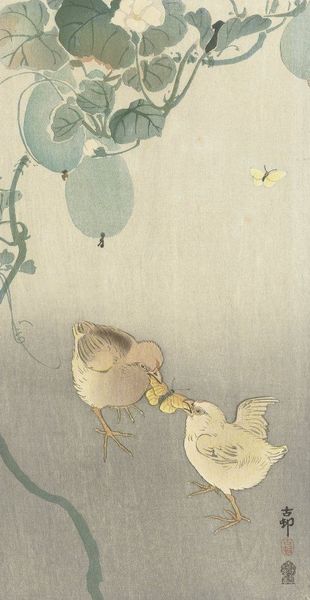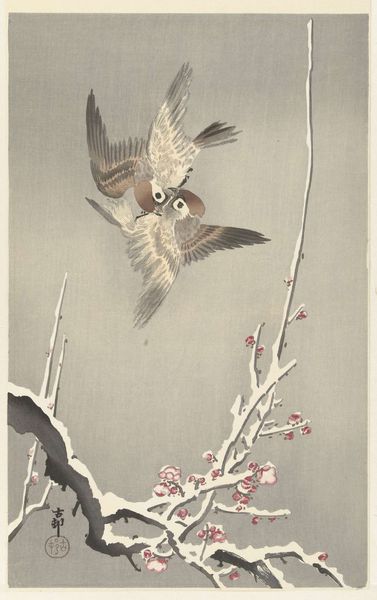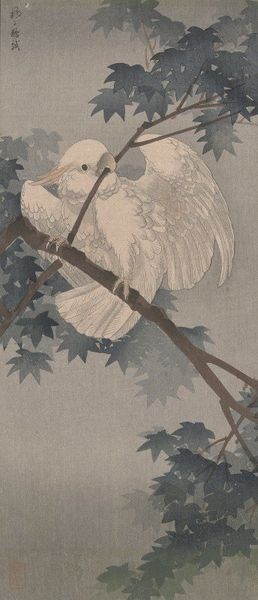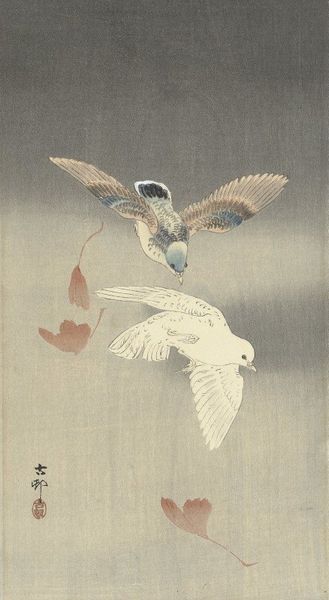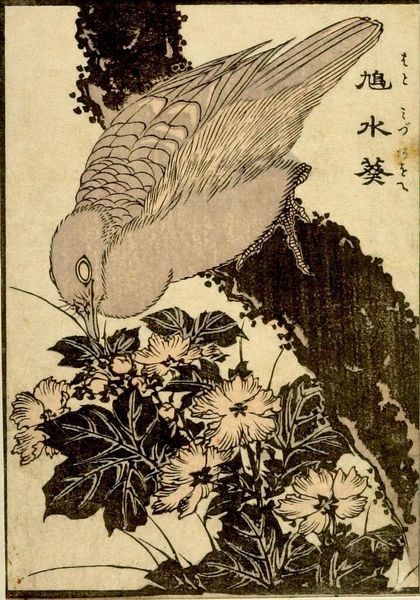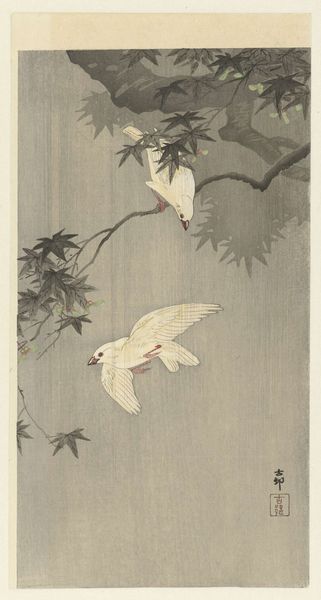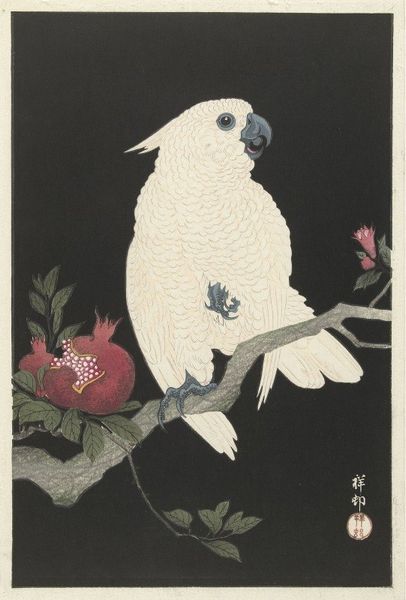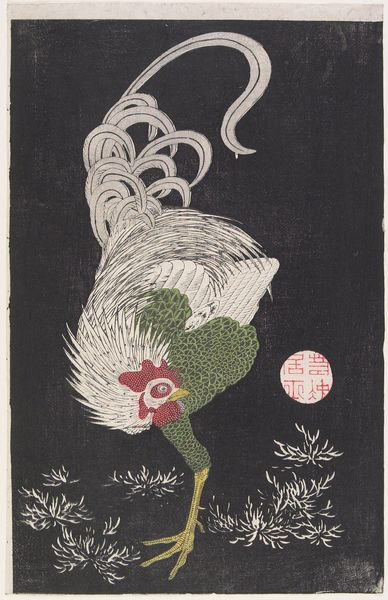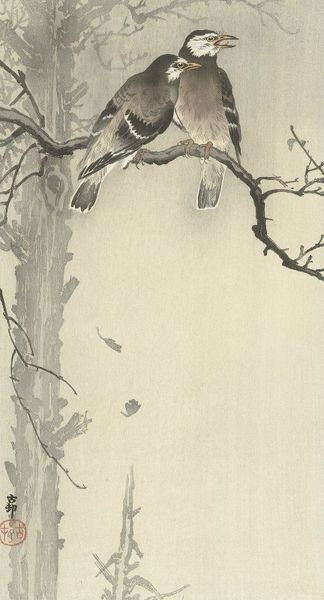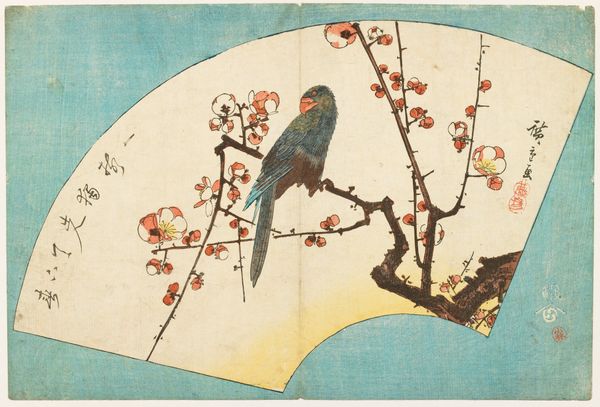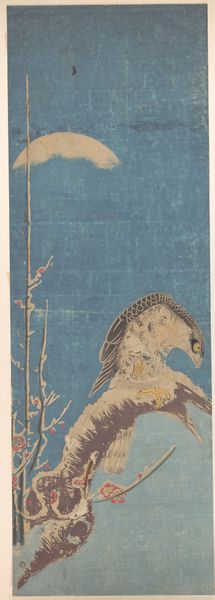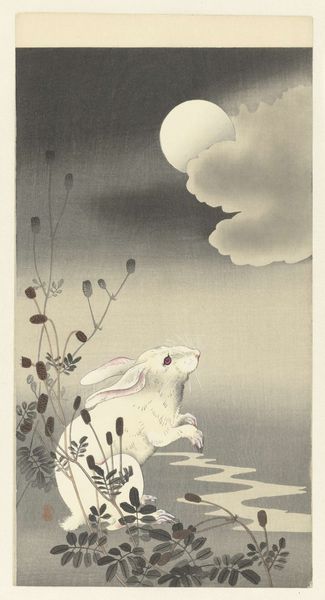
Copyright: Public Domain: Artvee
Editor: Here we have Ohara Koson’s “Two Cockatoo and Plum Blossom,” a woodblock print from the mid-1920s to mid-1930s. It’s strikingly graphic with those white birds against the deep black background. What symbolism might be embedded here? Curator: Observe how the starkness amplifies the contrast. It directs our gaze toward the white cockatoos – often symbols of purity and longevity in Asian art – nestled within the flowering plum branches. The plum blossom, of course, traditionally signifies resilience, renewal, and the arrival of spring after winter’s hardships. Doesn’t the coupling create a rich, emotional depth? Editor: So, you’re saying the artist may be using these commonly understood visual cues to communicate deeper meaning? Curator: Precisely. Consider also how the artist juxtaposes the ephemeral, delicate blossoms with the sturdy, long-lived birds. Might Koson be subtly meditating on time, mortality, and enduring beauty? Editor: That’s fascinating. I hadn't considered the plum blossoms in relation to the birds’ potential lifespan. The claws also strike me – quite detailed! Curator: Yes, and note how their posture, both alert and serene, mirrors a sense of watchful guardianship alongside acceptance of the cyclical nature of life represented by the blooms. The very graphic rendering in stark monochrome – might that signify mourning, in some contexts, and remembrance? Editor: Interesting thought, especially as the work was produced in times of unrest. Curator: Absolutely. And Ukiyo-e, though often celebrating pleasure, also provides visual anchors during shifting social currents. What do you feel these birds, amidst the plum blossoms, might be safeguarding? Editor: That’s given me a lot to consider. Thanks! Curator: A pleasure. Now, perhaps consider where these visual traditions persist even today…
Comments
No comments
Be the first to comment and join the conversation on the ultimate creative platform.
